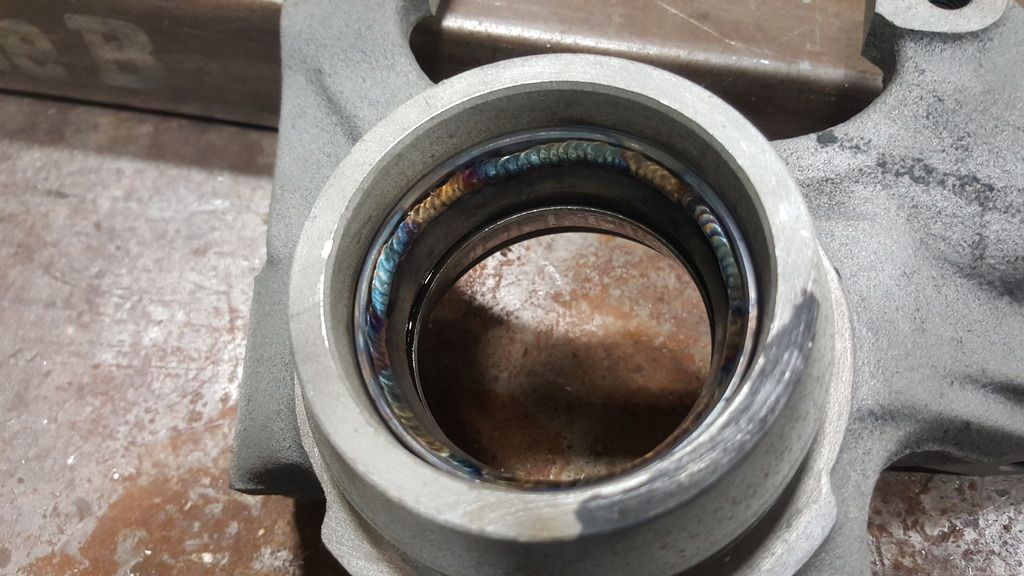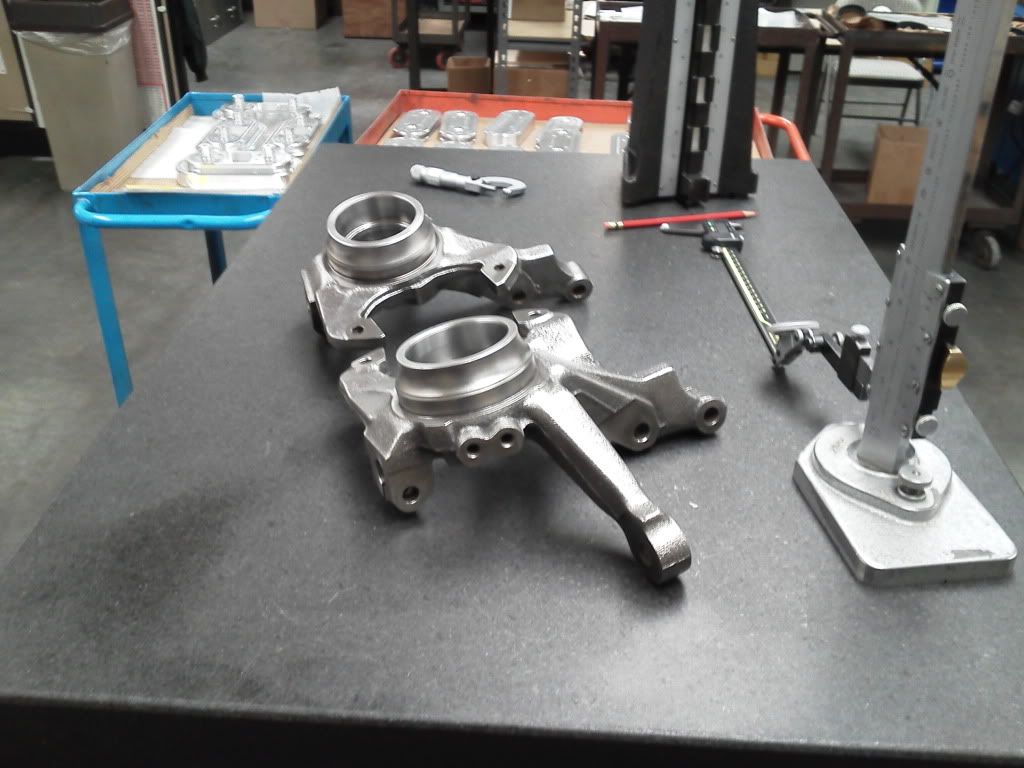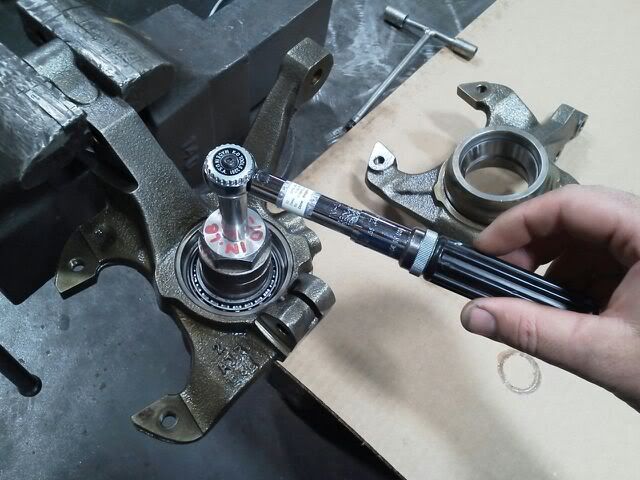Pricey ($58.oo +s&h), but I like to set things up right, not guess. Once I have it, I plan to look for any way at all that it can be gotten around so that if we DO NOT have to have it in order to be correct in how we shim or pre-load front wheel bearings, I'm going to find out how.
It's the actual dealership service tool, and for that reason alone I suspected that it was totally uneccessary.
I bet I can mike it out and determine a way to do without it!
Consider it my small sacrifice for you guys...
I'm guessing that the turning torque for the front hub can be measured just like it is for the rear bearing pre-load. But this will give me a benchmark for what that ought to be.
In other words:
Stack up shims, nut it down, then measure turning torque.
Depending on the result add or take away from the shim thickness.
~But first I want to know IF I GO BY THE FORD MANUALS, what is that turning torque exactly and precisely?
SO! I have the genuine FOMOCO Service tool (ROTUNDA!!! :notworthy on it's way to me, and I bet what I find out is that the results at the far end turn out to be "PLUS OR MINUS A BRICK OR A TRUCKLOAD..."
on it's way to me, and I bet what I find out is that the results at the far end turn out to be "PLUS OR MINUS A BRICK OR A TRUCKLOAD..."
So howzat? You see the kinda stuff I do to make sure your wheels are right on spec :laughing1:
Whattahell, Christmas presents ought to be useless anyway, and this is mine to me.
***If it DOES turn out to be useful - I can be convinced to share it around. UPS delivers everywhere and so does the Festiva Underground
I'd just like to know where it ends up - in case I decide to chrome it and put it in a small shrine on a bookshelf or something
~Wolfie out
It's the actual dealership service tool, and for that reason alone I suspected that it was totally uneccessary.
I bet I can mike it out and determine a way to do without it!
Consider it my small sacrifice for you guys...
I'm guessing that the turning torque for the front hub can be measured just like it is for the rear bearing pre-load. But this will give me a benchmark for what that ought to be.
In other words:
Stack up shims, nut it down, then measure turning torque.
Depending on the result add or take away from the shim thickness.
~But first I want to know IF I GO BY THE FORD MANUALS, what is that turning torque exactly and precisely?
SO! I have the genuine FOMOCO Service tool (ROTUNDA!!! :notworthy
 on it's way to me, and I bet what I find out is that the results at the far end turn out to be "PLUS OR MINUS A BRICK OR A TRUCKLOAD..."
on it's way to me, and I bet what I find out is that the results at the far end turn out to be "PLUS OR MINUS A BRICK OR A TRUCKLOAD..."So howzat? You see the kinda stuff I do to make sure your wheels are right on spec :laughing1:
Whattahell, Christmas presents ought to be useless anyway, and this is mine to me.
***If it DOES turn out to be useful - I can be convinced to share it around. UPS delivers everywhere and so does the Festiva Underground
I'd just like to know where it ends up - in case I decide to chrome it and put it in a small shrine on a bookshelf or something
~Wolfie out





Comment